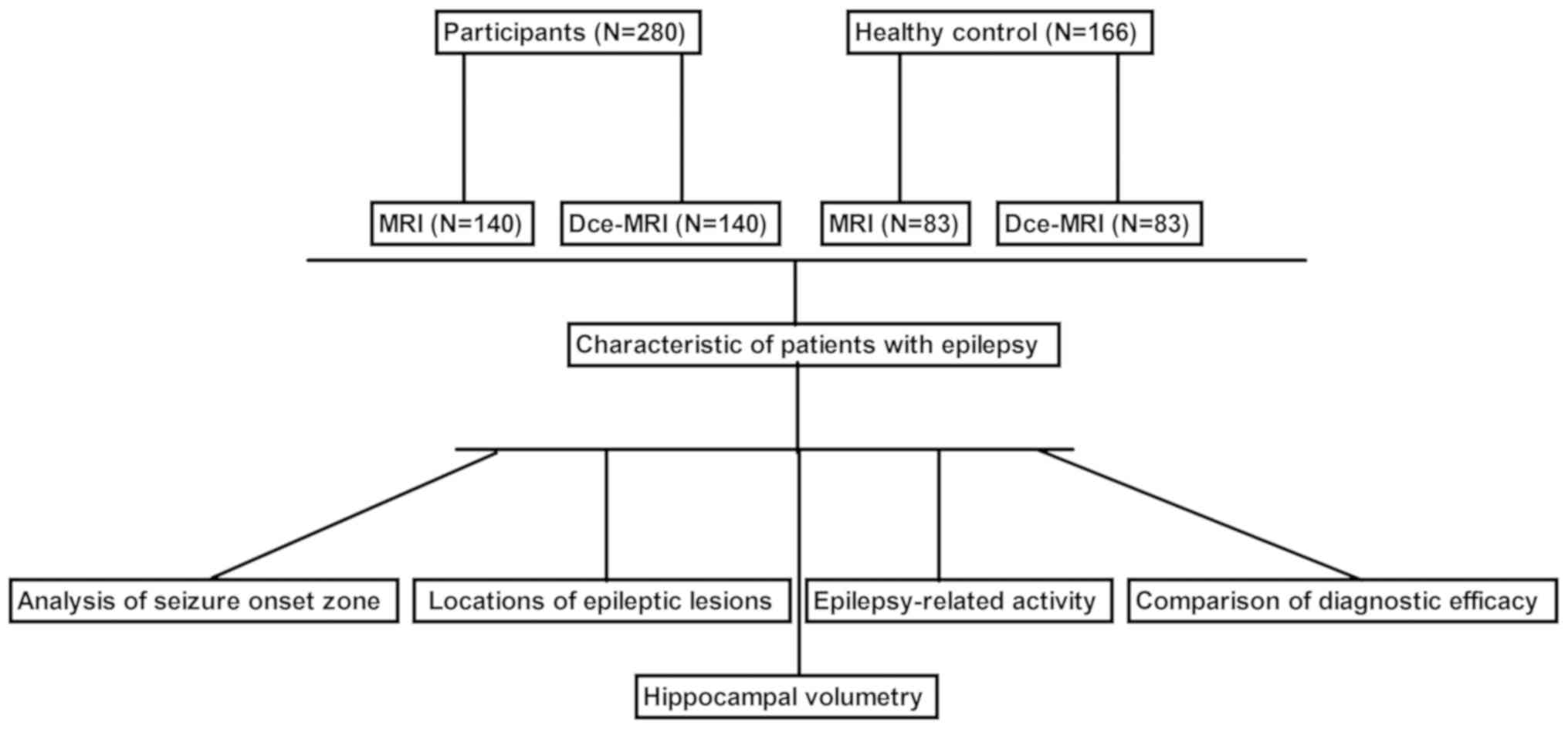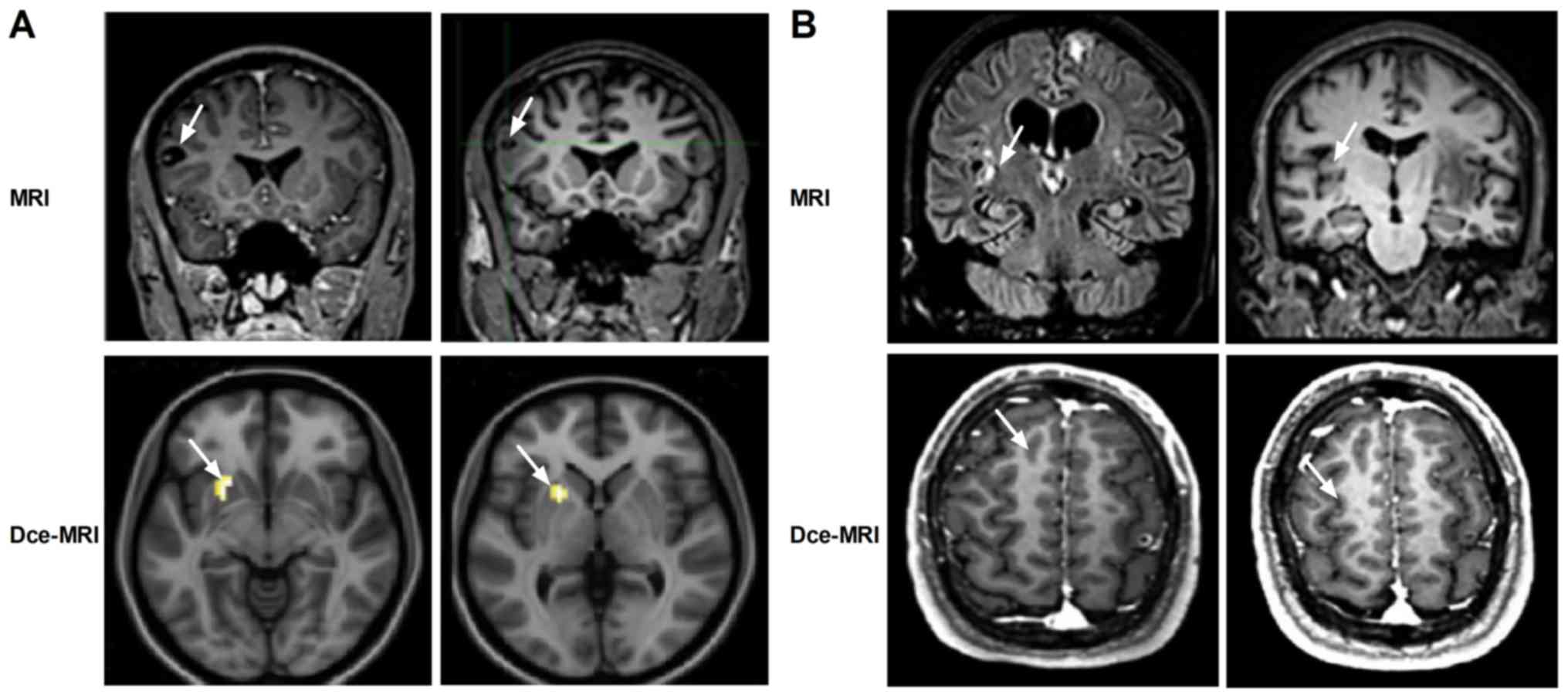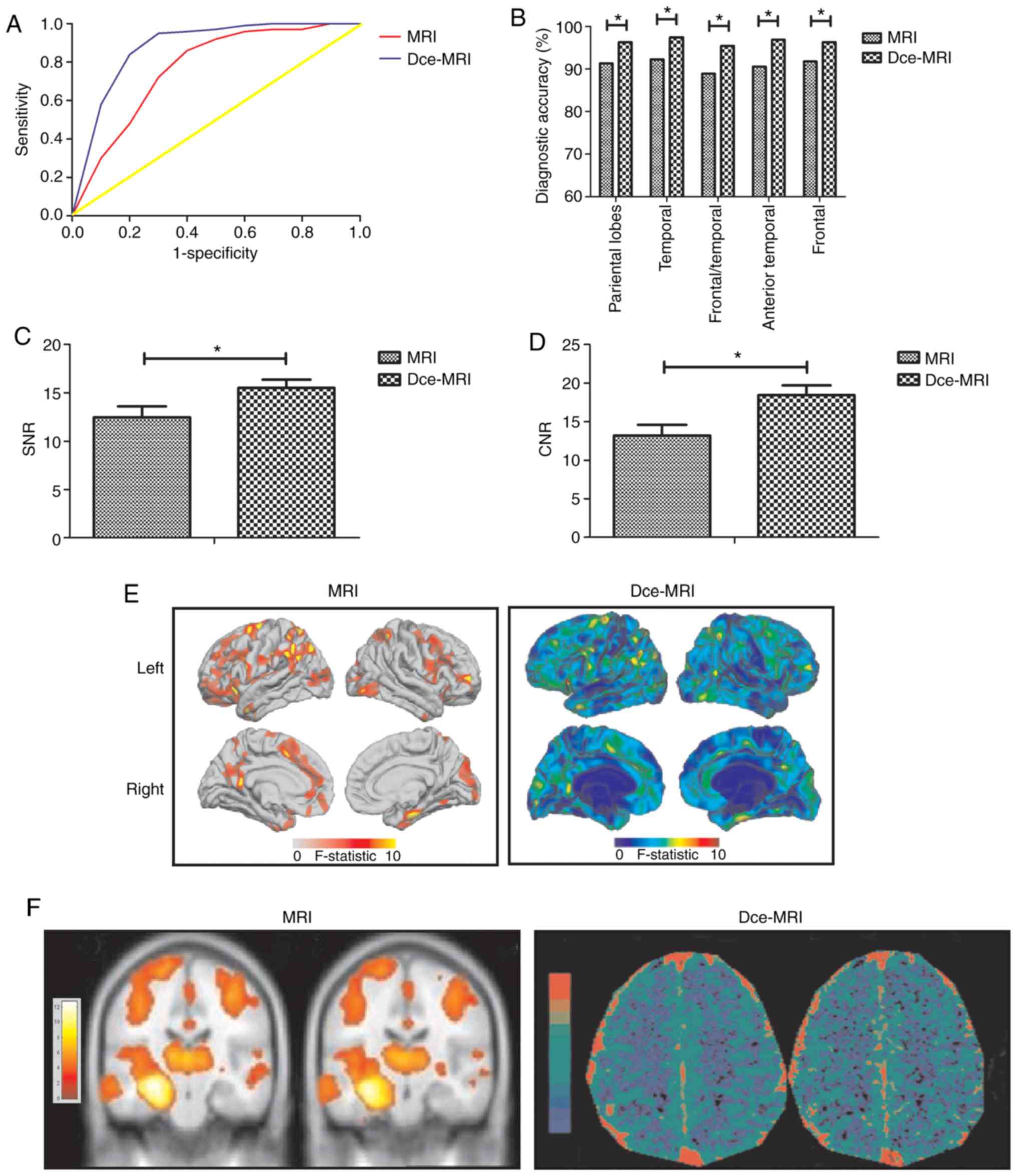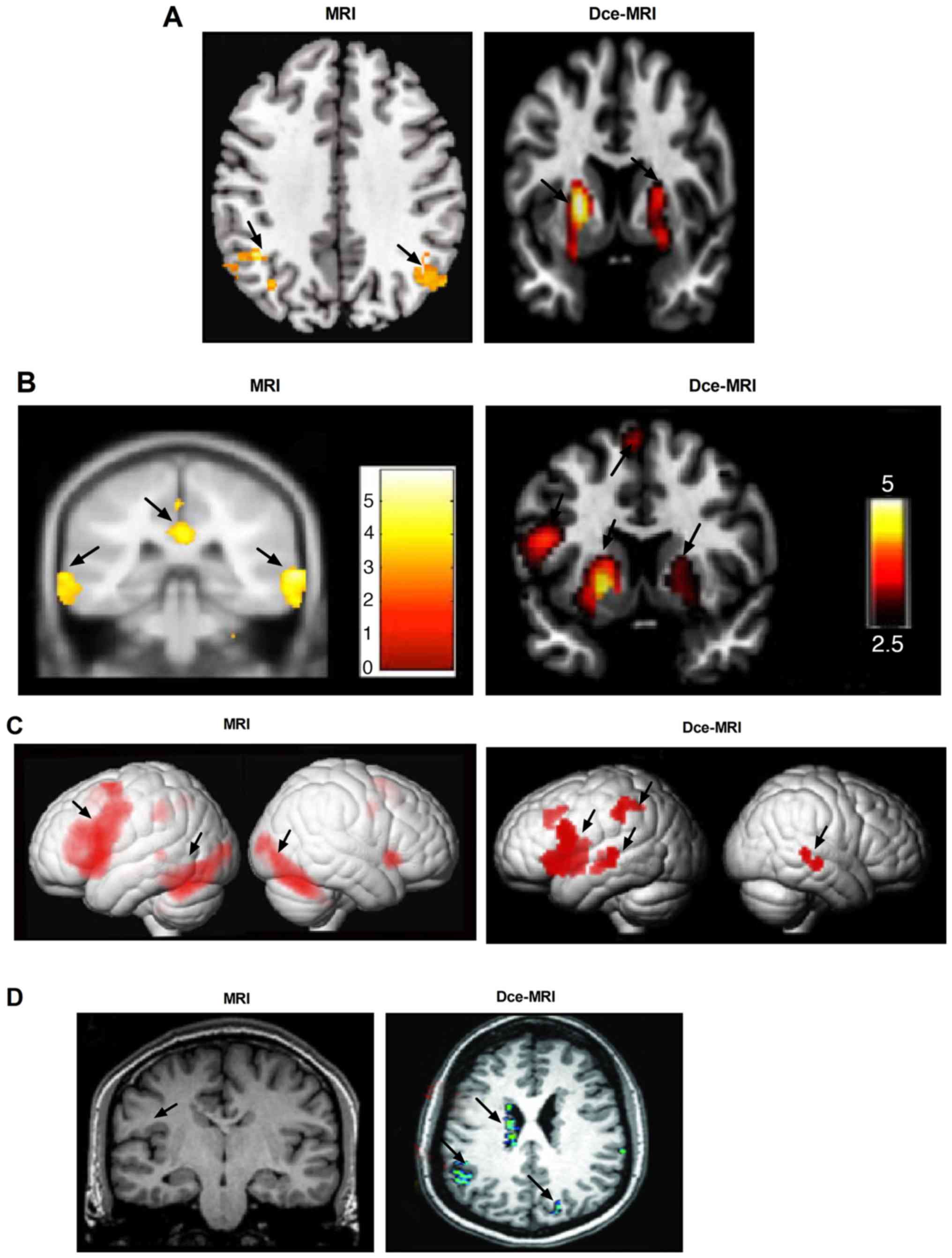|
1
|
Veersema TJ, Swampillai B, Ferrier CH, van
Eijsden P, Gosselaar PH, van Rijen PC, Spliet WGM, Mühlebner A,
Aronica E and Braun KPJ: Long-term seizure outcome after epilepsy
surgery in patients with mild malformation of cortical development
and focal cortical dysplasia. Epilepsia Open. 4:170–175.
2018.PubMed/NCBI View Article : Google Scholar
|
|
2
|
Auvin S, Wirrell E, Donald KA, Berl M,
Hartmann H, Valente KD, Van Bogaert P, Cross JH, Osawa M, Kanemura
H, et al: Systematic review of the screening, diagnosis, and
management of ADHD in children with epilepsy Consensus paper of the
task force on comorbidities of the ILAE pediatric commission.
Epilepsia. 59:1867–1880. 2018.PubMed/NCBI View Article : Google Scholar
|
|
3
|
Vaughan KA, Lopez Ramos C, Buch VP, Mekary
RA, Amundson JR, Shah M, Rattani A, Dewan MC and Park KB: An
estimation of global volume of surgically treatable epilepsy based
on a systematic review and meta-analysis of epilepsy. J Neurosurg
1-15: 2018.
|
|
4
|
Verche E, San Luis C and Hernandez S:
Neuropsychology of frontal lobe epilepsy in children and adults:
Systematic review and meta-analysis. Epilepsy Behav. 88:15–20.
2018.PubMed/NCBI View Article : Google Scholar
|
|
5
|
Kwok SC: Website review: Paediatric
epilepsy network of new south Wales. J Paediatrics Child Health.
54(1045)2018.
|
|
6
|
Zhao H, Lin G, Shi M, Gao J, Wang Y, Wang
H, Sun H and Cao Y: The mechanism of neurogenic pulmonary edema in
epilepsy. J Physiol Sci. 64:65–72. 2014.PubMed/NCBI View Article : Google Scholar
|
|
7
|
Tian XB, Li RC, Bu HL, Liu C, Liu TT,
Xiang HB and Lu CJ: The mechanism of electroacupuncture for
predicting the efficacy of deep brain stimulation in
pharmacoresistant epilepsy may be involved in the melanocortinergic
signal. Epilepsy Behav. 29:594–596. 2013.PubMed/NCBI View Article : Google Scholar
|
|
8
|
Cho CH: New mechanism for glutamate
hypothesis in epilepsy. Front Cell Neurosci. 7(127)2013.PubMed/NCBI View Article : Google Scholar
|
|
9
|
Middlebrooks EH, Grewal SS, Stead M,
Lundstrom BN, Worrell GA and Van Gompel JJ: Differences in
functional connectivity profiles as a predictor of response to
anterior thalamic nucleus deep brain stimulation for epilepsy: A
hypothesis for the mechanism of action and a potential biomarker
for outcomes. Neurosurg Focus. 45(E7)2018.PubMed/NCBI View Article : Google Scholar
|
|
10
|
Beckonert NM, Opitz T, Pitsch J, Soares da
Silva P and Beck H: Polyamine modulation of anticonvulsant drug
response: A potential mechanism contributing to pharmacoresistance
in chronic epilepsy. J Neurosci. 38:5596–5605. 2018.PubMed/NCBI View Article : Google Scholar
|
|
11
|
Viswanatha GL, Venkataranganna MV, Prasad
NBL and Godavarthi A: Achyranthes aspera attenuates epilepsy in
experimental animals: Possible involvement of GABAergic mechanism.
Metab Brain Dis. 32:867–879. 2017.PubMed/NCBI View Article : Google Scholar
|
|
12
|
St Louis EK and Cascino GD: Diagnosis of
epilepsy and related episodic disorders. Continuum (Minneap Minn).
22:15–37. 2016.PubMed/NCBI View Article : Google Scholar
|
|
13
|
Helbig KL, Farwell Hagman KD, Shinde DN,
Mroske C, Powis Z, Li S, Tang S and Helbig I: Diagnostic exome
sequencing provides a molecular diagnosis for a significant
proportion of patients with epilepsy. Genet Med. 18:898–905.
2016.PubMed/NCBI View Article : Google Scholar
|
|
14
|
Carmichael DW, Thornton JS, Rodionov R,
Thornton R, McEvoy A, Allen PJ and Lemieux L: Safety of localizing
epilepsy monitoring intracranial electroencephalograph electrodes
using MRI: Radiofrequency-induced heating. J Magn Reson Imaging.
28:1233–1244. 2008.PubMed/NCBI View Article : Google Scholar
|
|
15
|
Brown MG, Drees C, Nagae LM, Thompson JA,
Ojemann S and Abosch A: Curative and palliative MRI-guided laser
ablation for drug-resistant epilepsy. J Neurol Neurosurg
Psychiatry. 89:425–433. 2018.PubMed/NCBI View Article : Google Scholar
|
|
16
|
Drane DL: MRI-Guided stereotactic laser
ablation for epilepsy surgery: Promising preliminary results for
cognitive outcome. Epilepsy Res. 142:170–175. 2018.PubMed/NCBI View Article : Google Scholar
|
|
17
|
Delev D, Quesada CM, Grote A, Boström JP,
Elger C, Vatter H and Surges R: A multimodal concept for invasive
diagnostics and surgery based on neuronavigated voxel-based
morphometric MRI postprocessing data in previously nonlesional
epilepsy. J Neurosurg. 128:1178–1186. 2018.PubMed/NCBI View Article : Google Scholar
|
|
18
|
Fredriksen JR, Carr CM, Koeller KK,
Verdoorn JT, Gadoth A, Pittock SJ and Kotsenas AL: MRI findings in
glutamic acid decarboxylase associated autoimmune epilepsy.
Neuroradiology. 60:239–245. 2018.PubMed/NCBI View Article : Google Scholar
|
|
19
|
Ruber T, David B and Elger CE: MRI in
epilepsy: Clinical standard and evolution. Curr Opin Neurol.
31:223–231. 2018.PubMed/NCBI View Article : Google Scholar
|
|
20
|
Wang GB, Long W, Li XD, Xu GY and Lu JX:
Dynamic contrast-enhanced magnetic resonance imaging (DCE-MRI)
combined with positron emission tomography-computed tomography
(PET-CT) and video-electroencephalography (VEEG) have excellent
diagnostic value in preoperative localization of epileptic foci in
children with epilepsy. Med Sci Monit. 23:1–10. 2017.PubMed/NCBI View Article : Google Scholar
|
|
21
|
de Oliveira MS, Betting LE, Mory SB,
Cendes F and Castellano G: Texture analysis of magnetic resonance
images of patients with juvenile myoclonic epilepsy. Epilepsy
Behav. 27:22–28. 2013.PubMed/NCBI View Article : Google Scholar
|
|
22
|
Kulaseharan S, Aminpour A, Ebrahimi M and
Widjaja E: Identifying lesions in paediatric epilepsy using
morphometric and textural analysis of magnetic resonance images.
Neuroimage Clin. 21(101663)2019.PubMed/NCBI View Article : Google Scholar
|
|
23
|
Iachinski RE, de Meneses MS, Simão CA, da
Rocha SF, de Oliveira Braga F and Kowacs PA: Patient satisfaction
with temporal lobectomy/selective amygdalohippocampectomy for
temporal lobe epilepsy and its relationship with Engel
classification and the side of lobectomy. Epilepsy Behav.
31:377–380. 2014.PubMed/NCBI View Article : Google Scholar
|
|
24
|
Chen L, Ye Y, Chen H, Chen S, Jiang J, Dan
G and Huang B: Dynamic contrast-enhanced magnetic resonance imaging
for differentiating between primary tumor, metastatic node and
normal tissue in head and neck cancer. Curr Med Imaging Rev.
14:416–421. 2018.PubMed/NCBI View Article : Google Scholar
|
|
25
|
Boling W: Diagnosis and surgical treatment
of epilepsy. Brain Sci. 8(E115)2018.PubMed/NCBI View Article : Google Scholar
|
|
26
|
Rösch J, Hamer HM, Mennecke A, Kasper K,
Engelhorn T, Doerfler A and Graf W: 3T-MRI in patients with
pharmacoresistant epilepsy and a vagus nerve stimulator: A pilot
study. Epilepsy Res. 110:62–70. 2015.PubMed/NCBI View Article : Google Scholar
|
|
27
|
Harden C, Tomson T, Gloss D, Buchhalter J,
Cross JH, Donner E, French JA, Gil-Nagel A, Hesdorffer DC, Smithson
WH, et al: Practice guideline summary: Sudden unexpected death in
epilepsy incidence rates and risk factors: Report of the guideline
development, dissemination, and implementation subcommittee of the
American academy of neurology and the American epilepsy society.
Neurology. 88:1674–1680. 2017.PubMed/NCBI View Article : Google Scholar
|
|
28
|
Mehvari Habibabadi J, Badihian S, Tabrizi
N, Manouchehri N, Zare M, Basiratnia R, Barekatain M, Moein H,
Mehvari Habibabadi A, Moein P and Gookizadeh P: Evaluation of dual
pathology among drug-resistant epileptic patients with hippocampal
sclerosis. Neurol Sci. 40:495–502. 2019.PubMed/NCBI View Article : Google Scholar
|
|
29
|
Wang S, Jin B, Aung T, Katagiri M, Jones
SE, Krishnan B, Gonzalez-Martinez JA, Prayson RA, Najm IM,
Alexopoulos AV, et al: Application of MRI post-processing in
presurgical evaluation of non-lesional cingulate epilepsy. Front
Neurol. 9(1013)2018.PubMed/NCBI View Article : Google Scholar
|
|
30
|
Colon AJ, Osch MJPV, Buijs M, Grond JVD,
Hillebrand A, Schijns O, Wagner GJ, Ossenblok P, Hofman P, Buchem
MAV and Boon P: MEG-guided analysis of 7T-MRI in patients with
epilepsy. Seizure. 60:29–38. 2018.PubMed/NCBI View Article : Google Scholar
|
|
31
|
Jin B, Krishnan B, Adler S, Wagstyl K, Hu
W, Jones S, Najm I, Alexopoulos A, Zhang K, Zhang J, et al:
Automated detection of focal cortical dysplasia type II with
surface-based magnetic resonance imaging postprocessing and machine
learning. Epilepsia. 59:982–992. 2018.PubMed/NCBI View Article : Google Scholar
|
|
32
|
Alshafai L, Ochi A, Go C, McCoy B, Hawkins
C, Otsubo H, Snead OC, Rutka J and Widjaja E: Clinical, EEG, MRI,
MEG, and surgical outcomes of pediatric epilepsy with astrocytic
inclusions versus focal cortical dysplasia. Epilepsia.
55:1568–1575. 2014.PubMed/NCBI View Article : Google Scholar
|
|
33
|
Najafi MR, Malekian M, Akbari M and Najafi
MA: Magnetic resonance imaging and electroencephalography findings
in a sample of Iranian patients with epilepsy. J Res Med Sci.
23(106)2018.PubMed/NCBI View Article : Google Scholar
|
|
34
|
Torres CV, Pastor J, Garcia-Navarrete E,
Pulido-Rivas P and Sola RG: Classification of structural lesions in
magnetic resonance imaging. Surgical implications in drug-resistant
epilepsy patients. Rev Neurol. 61:241–248. 2015.PubMed/NCBI(In English, Spanish).
|
|
35
|
Peng SJ, Harnod T, Tsai JZ, Ker MD, Chiou
JC, Chiueh H, Wu CY and Hsin YL: Evaluation of subcortical grey
matter abnormalities in patients with MRI-negative cortical
epilepsy determined through structural and tensor magnetic
resonance imaging. BMC Neurol. 14(104)2014.PubMed/NCBI View Article : Google Scholar
|
|
36
|
van Rooijen BD, Backes WH, Schijns OE,
Colon A and Hofman PA: Brain imaging in chronic epilepsy patients
after depth electrode (stereoelectroencephalography) implantation:
Magnetic resonance imaging or computed tomography? Neurosurgery.
73:543–549. 2013.PubMed/NCBI View Article : Google Scholar
|
|
37
|
Pizarro R, Nair V, Meier T, Holdsworth R,
Tunnell E, Rutecki P, Sillay K, Meyerand ME and Prabhakaran V:
Delineating potential epileptogenic areas utilizing resting
functional magnetic resonance imaging (fMRI) in epilepsy patients.
Neurocase. 22:362–368. 2016.PubMed/NCBI View Article : Google Scholar
|


















